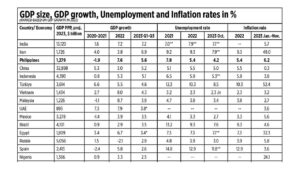IC mulls perks to help boost PHL microinsurance sector

THE INSURANCE COMMISSION (IC) is looking to give incentives to new microinsurance players to help prop up the sector and boost financial inclusion in the Philippines.
The regulator plans to introduce incentives for insurance firms entering the microinsurance market, Insurance Commissioner Reynaldo A. Regalado said at an industry forum on Tuesday.
“In the Philippines, microinsurance sells itself. The only thing we have to do is to expose them to everyone. In terms of policies to boost this, we’re looking at incentives and we’re looking at the way we have been checking them. There will be less regulations for some of them if that’s possible and just to make sure, we can help them post audited [financial statements],“ he said.
Microinsurance MBA Association of the Philippines Chairman Emeritus Jaime Aristotle B. Alip said at the same event that lowering taxes or a tax credit scheme could encourage more insurers to go into microinsurance.
He added that the IC could exempt some microinsurance firms from the International Financial Reporting Standard 17 requirement.
Latest data from the IC showed the microinsurance industry’s premium income rose by 19.6% to P10.16 billion as of end-September 2023, up from P8.49 billion in the same period in 2022.
The number of lives insured under microinsurance policies also went up by 2.34% year on year to 56.29 million from 55 million, the IC said.
While the microinsurance industry has grown in the past years, the sector still lacks major players as there are only 49 companies selling microinsurance, Mr. Regalado noted.
This is because the industry caters to sectors that are exposed to a lot of risks, which result in higher loss ratios, Philippine Insurers and Reinsurers Association, Inc. Executive Director Michael F. Rellosa said at the same event.
Microinsurance could get a boost from digital innovations, UnionDigital Bank Chief Commercial and Revenue Officer Mike Singh said.
Digital innovations could help microinsurers reach remote populations establish trust with communities, and help them design more affordable products and manage operational costs, he said.
“Microinsurance and credit together form a powerful duo in advancing financial inclusion, offering a safety net to the underserved by providing accessible, cost-effective coverage alongside essential credit services,” Mr. Singh said.
AGRI-INSURANCEMeanwhile, a potential growth area for the microinsurance industry is agriculture as the farm sector faces risks related to climate change and low capital, Pioneer, Inc. President and Chief Executive Officer Lorenzo O. Chan, Jr. said.
However, agri-insurers struggle with poor sales, cost-effective distribution, loss assessment, and high loss ratios, International Monetary Fund (IMF) Operations Officer in Climate and Risk Management Advisory Services, Financial Institutions Group Paul Xavier Espinosa said.
“The agri-insurance industry in the Philippines remains underdeveloped, with just three Philippine insurers actively offering agri products in 2022,” he added.
Insurers are also hesitant to go into the agriculture sector due to the lack of data, as these are mostly only available at the municipal level, Mr. Chan said.
United Nations Development Programme Climate Action Programme Team Leader Floradema C. Eleazar said they are partnering with government departments under the Strengthening Institutions and Empowering Localities Against Disasters and Climate Change in the Philippines program to develop a database for the agri-insurance sector. — AMCS




